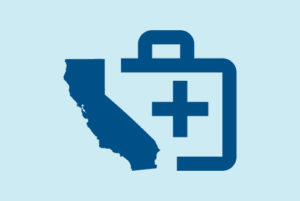Earlier this week, the Los Angeles Times published an important article that sheds a fair bit of light on one of California’s most insidious yet little-known health care problems: chronic Medi-Cal underfunding.
“‘Separate and unequal’: Critics say Newsom’s Medicaid reforms leave patients behind” offers the example of Michael Reed, a security guard who lives in Watts and ran out of blood pressure medication. Unsure of where else to go, he turned to his local emergency department for a refill.
Throughout California, Michael’s story is all too common — Californians seeking care in hospital emergency departments because there are too few primary care doctors in the neighborhood, or not enough take Medi-Cal patients.
The Times quotes Dr. Oscar Casillas, who runs the emergency department at Martin Luther King Jr. Community Hospital. “For some people, the emergency room is a last resort. But for so many people who live here, it’s literally all there is,” he said. “Most of what I see is preventable — preventable with normal access to healthcare. But we don’t have that here.”
The biggest reason for this unfortunate phenomenon is that Medi-Cal, the state’s safety-net health care coverage plan, pays just 74 cents for every dollar that it costs to care for patients. These rates have been frozen for a decade, despite rapidly increasing demand for services like behavioral health and geriatric care. In communities with high rates of Medi-Cal enrollment like Watts, this means clogged hospitals where people needing urgent treatment face long and unnecessary delays.
In other words, Medi-Cal shortchanges people with the greatest needs, essentially creating a caste structure within the state’s health care system. And with two-thirds of Medi-Cal enrollees being people of color, the systemic underfunding only deepens existing health disparities.
From the Times piece: “Medicaid is generally the lowest payer in healthcare, and California is among the lowest-paying states in the country, experts say.”
If anything is to be done to address Medi-Cal’s structural imbalance — and the disparate health outcomes perpetuated by its funding formula — the plans must not only cover the basic cost of providing health care, but also invest at even greater levels. Only then can we begin to offset the many socioeconomic and environmental disadvantages faced by Medi-Cal enrollees.
Again, from the Times piece: “Year-over-year analyses published by the state Department of Health Care Services, which administers Medi-Cal, have found that, by some measures, Medi-Cal health plans are getting worse at caring for patients, not better …”
Addressing health inequities is not only the right thing to do, but it also makes prudent financial sense. Californians with greater access to the full range of health care services will have their diseases treated sooner, ultimately at less cost to the state. More importantly, the lives of more Californians will be saved and changed for the better.
This will require a significant commitment on the part of California’s leaders — to ensure that the most vulnerable communities in California get the resources they need for better health outcomes. For our part, hospitals are committed to pressing policymakers to take the steps necessary to make good on this commitment.
California’s most vulnerable are depending on it.


